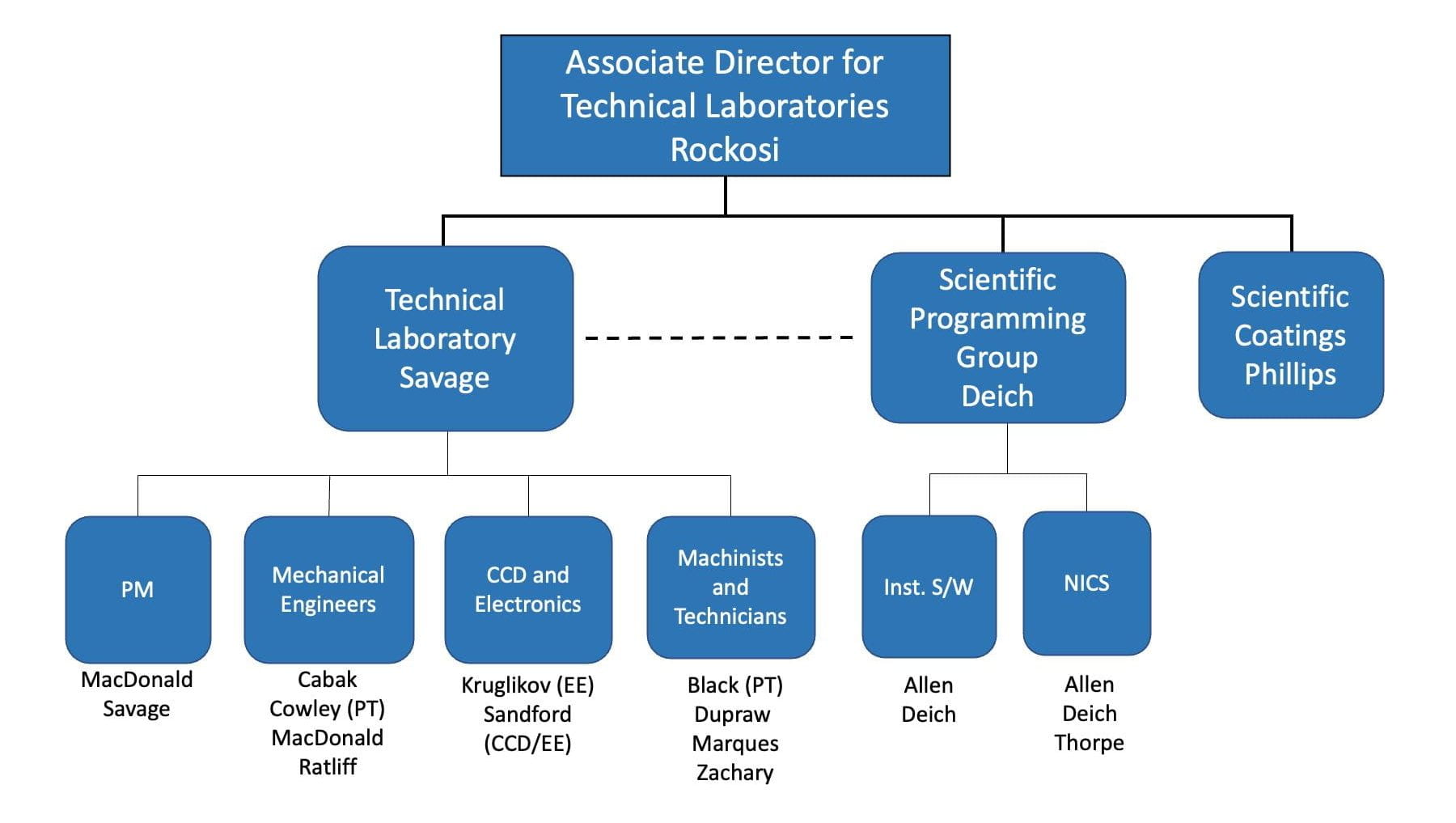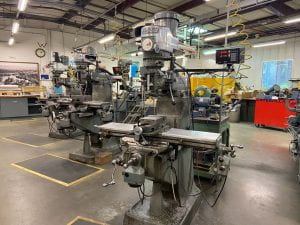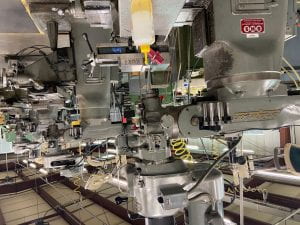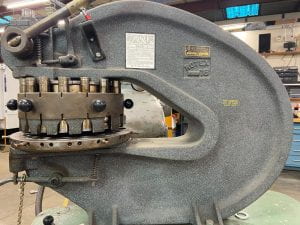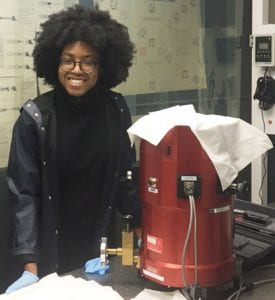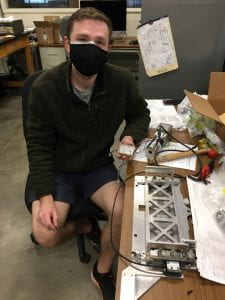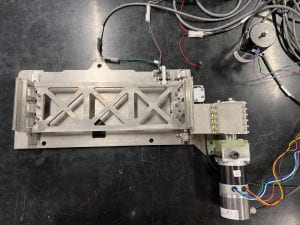The Technical Laboratories Organizational Chart
The Technical Laboratories Leadership
UCSC Technical Laboratories Associate Director: Constance Rockosi – crockosi@ucolick.org
 Dr. Rockosi is a Professor of Astronomy and Astrophysics at UCSC. She has held many critical positions within UCSC including Chair of the A&A department. Dr. Rockosi is currently leading instrument efforts at UCSC, Calibration scientist for the DESI project, leading the detector development for the Keck Cosmic Reionization Mapper (KCRM), and the Low Resolution Imaging Spectrometer (LRIS), supporting the Keck Planet Finder (KPF) in final detector performance testing as well as overseeing lab operations and setting/verifying priorities.
Dr. Rockosi is a Professor of Astronomy and Astrophysics at UCSC. She has held many critical positions within UCSC including Chair of the A&A department. Dr. Rockosi is currently leading instrument efforts at UCSC, Calibration scientist for the DESI project, leading the detector development for the Keck Cosmic Reionization Mapper (KCRM), and the Low Resolution Imaging Spectrometer (LRIS), supporting the Keck Planet Finder (KPF) in final detector performance testing as well as overseeing lab operations and setting/verifying priorities.
UCSC Scientific Programming Group Manager: William Deich – will@ucolick.org
 Mr.Mr Deich manages the S/W staff members in the development of software for new instruments, support of operational software for Lick Observatory, as well as maintaining and supporting the UCO IT infrastructure. MrMr. Deich is also an individual contributor for controls engineer on internal and external UCO instrument projects supporting controls architecture development, planning and instrument integrated testing prior to and after instrument delivery as well as controls and S/W maintenance post delivery.
Mr.Mr Deich manages the S/W staff members in the development of software for new instruments, support of operational software for Lick Observatory, as well as maintaining and supporting the UCO IT infrastructure. MrMr. Deich is also an individual contributor for controls engineer on internal and external UCO instrument projects supporting controls architecture development, planning and instrument integrated testing prior to and after instrument delivery as well as controls and S/W maintenance post delivery.
UCSC Technical Laboratories Manager: Ms. Maureen Savage – msavage@ucolick.org
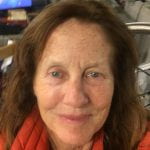 Ms. Savage manages the technical laboratory staff including the mechanical engineers, electrical engineers, the fabrication mechanicians and is also an individual contributor as a project manager for several internal and external instrument developments. The staff is matrixed so in many cases staff report to a PI or Faculty member as their functional manager on a specific project and to Ms. Savage for priorities, daily assignments and time reporting.
Ms. Savage manages the technical laboratory staff including the mechanical engineers, electrical engineers, the fabrication mechanicians and is also an individual contributor as a project manager for several internal and external instrument developments. The staff is matrixed so in many cases staff report to a PI or Faculty member as their functional manager on a specific project and to Ms. Savage for priorities, daily assignments and time reporting.
The Technical Laboratories is a matrixed organization with engineering and technical disciplines working on a variety of projects reporting to PI and Faculty as needed. The staff are matrixed to a specific project according to priorities and project needs and can be redirected to different projects and effort as priorities change. Dr. Rockosi works with the Technical labs managers (Savage, Deich) to review and adjust priorities as necessary, meeting weekly to discuss priorities, progress and status.
Technical Laboratories includes the following technical disciplines
- Mechanical Engineering Group
- Instrument Fabrication Group
- Electronics engineering Group
- Detector Laboratory
- Advanced Coating Laboratory (Director Drew Phillips)
- Scientific Programming Group, managed by Mr. William Deich and includes the following technical disciplines
Lab Activities and personnel

The Technical labs are responsible for the design and fabrication of some of the best astronomical instruments on this (or as far as we know, any) planet. Instrumentation design and fabrication, integration and test, risk reduction prototyping, instrument warm and cold testing, initial verification testing and final validation testing on the telescope are all part of the technical labs efforts. In the picture to the left we find a postdoc (Dr. Deno Stelter), our electronics engineer, Gabriel Kruglikov and an undergraduate working to cool down and test one of our test cryostats to evaluate thermal controls within the instrument.
In another area of the lab in a small clean room, a graduate student, Brittany Miles prepares a cryostat for detector integration and testing. The detector is on loan to UCO so Brittany, with mentorship from Phil Hinz, can evaluate its performance and operational parameters in preparation for a long wavelength channel for SCALES. The clean room keeps contamination in check as Ms. Miles works on the internals of the cryostat.
NICS
- Instrument S/W development and integration
- Controls engineering
- Mt. Hamilton Support for new and existing instrumentation, S/W upgrades, computer upgrade support etc etc
Current Instruments and collaborations in design and fabrication:
- Keck Cosmic Reionization Mapper (KCRM) (Detector system UCO PI: C. Rockosi)
- https://keckobservatory.org/the-keck-cosmic-reionization-mapper/
- Low Resolution Imaging Spectrometer (LRIS) Upgrade (Detector system UCO PI: C. Rockosi)
- https://www2.keck.hawaii.edu/inst/lris/lrishome.html
- Keck Planet Finder (KPF) (Detector system UCO PI: C. Rockosi)
- https://exoplanets.caltech.edu/kpf/
- Santa Cruz Array of Lenslets for Exoplanet Science (SCALES) PI: A. Skemer
- https://arxiv.org/abs/2012.09098
- Fiber Optic Broadband Optical Spectrometer (FOBOS), PI: K. Bundy
- Completed March 2021 AO system Wave Front sensor for Lick Observatory (WFS) PI: Don Gavel/Phil Hinz
Chris Ratliff Mechanical Engineer – cratliff@ucolick.org
Gerald Cabak Mechanical Engineer – cabak@ucolick.org
Nick MacDonald Mechanical Engineer – nkm@ucolick.org
Dale Sandford Electronics and CCD Specialist – sandford@ucolick.org
Gabriel Kruglikov Electronics and CCD Engineer – gkruglik@ucolick.org
Pavl Zachary Mechanician Specialist – pczachar@ucsc.edu
David Marques Mechanician Technician – marques@ucolick.org
The engineering group includes mechanical, electrical and detector engineers working closely with the project Principal Investigators to produce designs, drawings, produce parts and integrate systems that push instruments to meet, and many times exceed, the initial system requirements. The combination of talents in this department takes the projects from the conceptual stage and forges those concepts into working drawings that are then passed on to the Fabrication Shop for fabrication. Integration, and verification testing is ideally performed in the specially equipped rooms that allow safe integration of state of the art detectors and components.
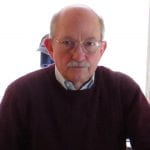
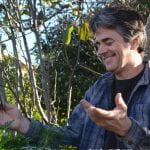

The current engineering staff include Chris Ratliff, Gerald Cabak, and Nick MacDonald, Dale Sandford (electronics and CCD specialist), and Gabriel Kruglikov (Electronics engineer).
These UCO technical team engineers and technicians travel to both Mauna Kea and to Mt. Hamilton to support instrument integration and verification testing at both locations. The team is also called upon by both observatories to consult on and perform needed instrument repairs.nst. S/W
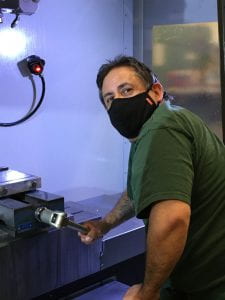
Once the instrument designs are fully detailed and during the full scale development phase part fabrication begins in the instrument lab. The highly skilled mechanicians are responsible for the quality high-precision machining, welding, assembly, and alignment of the World-class astronomical instruments produced here at the labs. The design engineers work closely with the mechanicians throughout the fabrication process and assembly. The current mechanicians include Pavl Zachary and David Marques.
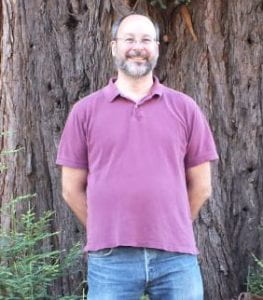
Dale Sandford, Electrical Engineering sandford@ucolick.org
Gabriel Kruglikov, Electrical Engineering – gkruglik@ucolick.org
The CCD lab provides testing and support for the optical and infrared detectors used by UC Observatories. Dale Sandford is the Associate Detector Engineer for the CCD Lab and the senior electronics engineer overseeing the technical work by the electronics engineers and technicians providing the hands on work. Mr. Sandford leads the detector test and integration efforts, working closely with Dr. Rockosi (Associate Director of TL) for all instruments in our queue including KCRM, LRIS, SCALES etc.
UCO also maintains a more general electronics lab where the work includes electronics design (CAD), preamp and cable fabrication, solder stations, cable and harness fabrication and test equipment. Mr. Gabriel Kruglikov is a junior engineer working in the electronics lab supporting a wide variety of instruments in development and test. He is currently working on the integration and test of the motor control stages for KCRM and SCALES and will work closely with the PIs and the Scientific Programming Group (SPF) to full test these systems. Gabriel Kruglikov pictured below assembling a motor control stage for KCRM pictured in detail on the left.

It was developed in response to a need for improved optical coatings for ground-based astronomy, in particular, silver-based reflective coatings for telescope mirrors and broad-band anti-reflection (AR) coatings for lenses, windows and prisms.
The ACL is headed by Dr. Andrew Phillips – phillips@ucolick.org
Assisted by Brian Dupraw, Coatings Tech: dupraw@ucolick.org
Facilities Reflective Coatings
 What are optical coatings? Optical coatings are thin films applied to mirror and lens surfaces to enhance reflection (for mirrors) or suppress reflection (“anti-reflection” for lenses and other transmissive optics). They can consist of one or multiple layers of various materials, and are generally quite thin, perhaps 200-400 nm in thickness for visible-light coatings – this is roughly one half a wavelength of visible light, or1/300 the diameter of a human hair. Note that the terms “thin films” and “coatings” are used interchangeably, although a coating can include multiple thin films.
What are optical coatings? Optical coatings are thin films applied to mirror and lens surfaces to enhance reflection (for mirrors) or suppress reflection (“anti-reflection” for lenses and other transmissive optics). They can consist of one or multiple layers of various materials, and are generally quite thin, perhaps 200-400 nm in thickness for visible-light coatings – this is roughly one half a wavelength of visible light, or1/300 the diameter of a human hair. Note that the terms “thin films” and “coatings” are used interchangeably, although a coating can include multiple thin films.
In this lab, optical fabrication and testing takes place. It is currently being run by world-class optician, Drew Phillips and assisted by Brian Dupraw. In 2006, the Optics and Instrument Shops re-aluminized the 120″ mirror of the Shane Telescope at Lick Observatory. It is planned to recoat the Shane 120” mirror in 2022.
See the step-by-step report here.
The team travels to Mt. Hamilton on a regular basis to assess and clean the optics, not just on the telescopes but on all of the instruments as well.
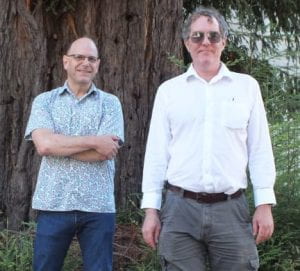
Will Deich, Sci. Programming Gp Leader – will@ucolick.org
Steve Allen, Programmer/Analyst – sla@ucolick.org
Thorpe, Systems Administrator – dethorpe@ucolick.org
The UCO/Lick Observatory SPG creates and maintains software in support of engineering and optical R&D, telescope and instrument operation, observing, and data reduction.
The group has provided all levels of software support, ranging from chip-level DSP programming and embedded code for Galil motion controllers to high-level GUIs and image reduction tools for end users (astronomers). We have written the software for controlling most of the telescopes and instruments at Lick Observatory (Mt. Hamilton, California). We have also created the software for Keck Observatory’s HIRES, ESI and DEIMOS spectrographs; the Keck1 ADC (the Keck1 Atmospheric Dispersion Compensator); the LRIS “red-side” detector upgrade; and K1DM3 (the Keck1 Deployable Tertiary Mirror). Current software projects for Keck include yet another LRIS red-side detector upgrade; the KCRM (Keck Cosmic Reionization Mapper) detector server; KPF (Keck Planet Finder); and SCALES (Santa Cruz Array of Lenslets for Exoplanet Spectroscopy).
We provide ongoing software support for these instruments at both observatories. We provide software for operating various equipment in UCO/Lick laboratories. We consult on the design of software for future instruments.
The group also provides a continuous level of support for ongoing operations and remote observing as well as maintaining the infrastructure at UCSC necessary for continued operations.
Current Members
- Will Deich, Manager/Programmer/Analyst
- Steve Allen, Programmer/Analyst
- David Eric Thorpe, System Administrator
- Dusty Reichwein, Programmer/Analyst
- Hamilton Spectrograph – Control software for the Hamilton Spectrograph on the Shane telescope at Lick Observatory was first deployed in 1986/87, and fully refreshed in 2010 with a modern motion controller.
- Kast Double Spectrograph – Control software for the Kast Spectrograph on the Shane telescope was first deployed in 1992, with major upgrades in 2008.
- Anorad Profilometer – Measurement control and data reduction software for the profilometer used in the UCO/Lick Optical Laboratory. Initially used to fabricate the convex aspheric surface of the secondary mirrors for the Keck telescopes. Subsequently used during the fabrication of many other optical elements for instruments.
- LIRC-II – Control software for the second Long InfraRed Camera used on the Kuiper Airborne Observatory and at Lick Observatory on Mt. Hamilton.
- HIRES – Control software for the High Resolution Echelle Spectrograph installed on the Keck I telescope on Mauna Kea in 1994.
- AMOS – Control and observation planning software for the robotically-positioned fiber heads of the Automated Multi-Object Spectrograph at Lick Observatory on Mt. Hamilton.
- PFCam – Control software for the Prime Focus Camera installed on the Shane telescope at Lick Observatory on Mt. Hamilton.
- ESI – Control software for the Echellette Spectrograph and Imager installed on the Keck I telescope on Mauna kea in 1999.
- HIRES Exposure Meter – Control software for the HIRES Exposure Meter installed on the Keck I telescope on Mauna Kea in 1999.
- DEIMOS – Control software for the DEep Imaging Multi-Object Spectrograph installed on the Keck II telescope on Mauna Kea in 2002.
- Poco – Control software used for both the Shane and Nickel telescopes and domes.
- AO Upgrade – Control software to upgrade the Adaptive Optics system installed on the Shane telescope at Lick Observatory on Mt. Hamilton.
- HIRES Mosaic Upgrade – Control software for the new mosaic detector being installed into HIRES on the Keck I telescope on Mauna Kea during 2004.
- Keck1 ADC – Control software for the Keck 1 atmospheric dispersion compensator, built at UCO, installed and commissioned 2009.
- K1DM3 – Control software for the Keck 1 Deployable Tertiary, built at UCO, and installed and commissioned 2018.
- APF – All software for the semi-robotic Automated Planet Finder facility at Mt Hamilton, excluding the control software provided by the telescope and dome vendor.

